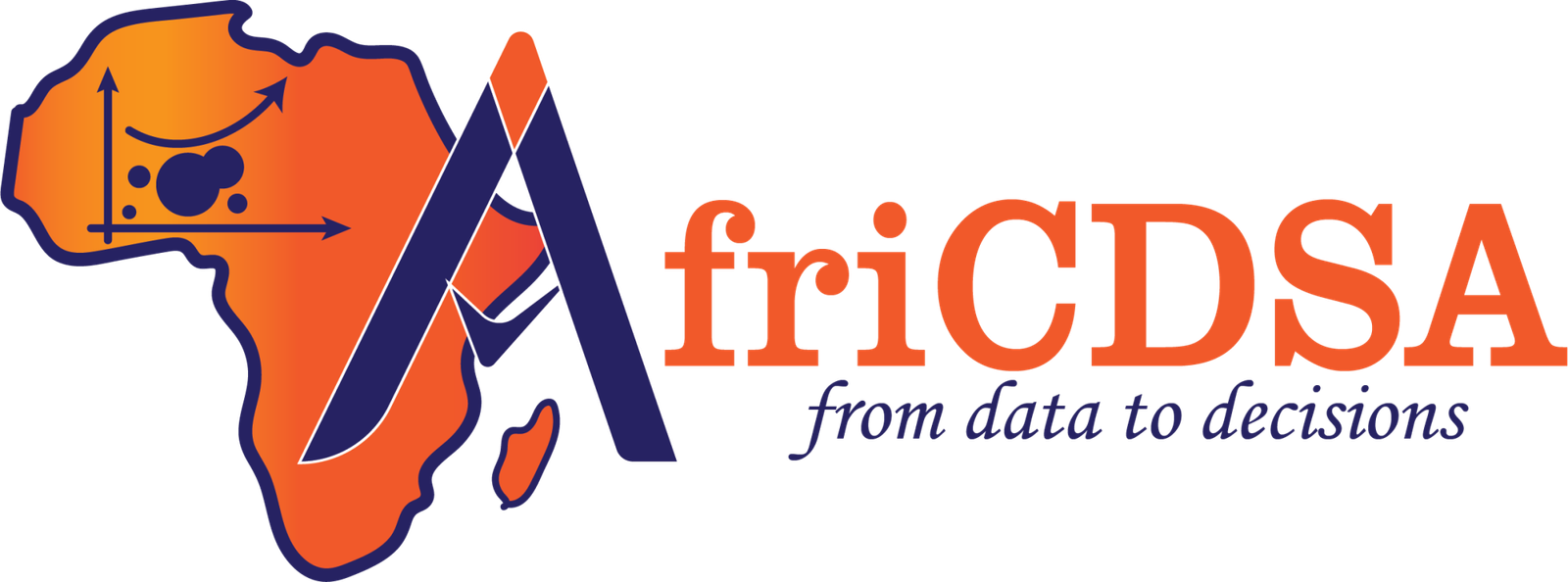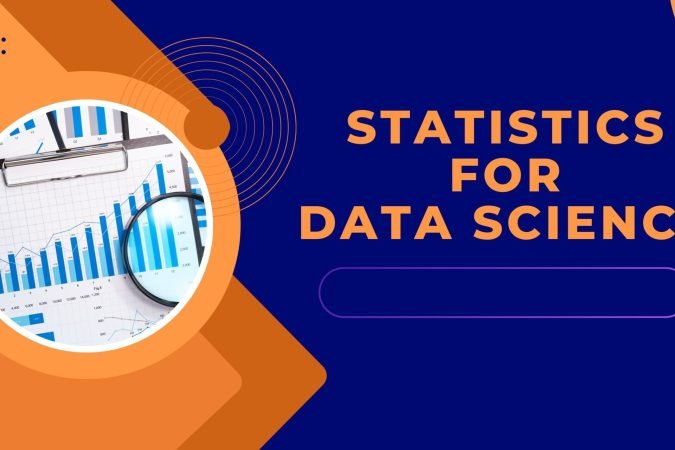Description
Curriculum
Instructor
Certified Data Scientist Program Overview
The Certified Data Scientist Program offered by AFRICDSA and accredited by International Association for Business Analytics Certification(IABAC) is designed to equip learners with in-demand data science skills, making them job-ready for a career in data science. The course spans 5 months (full-time) or 9 months (part-time) and offers both live online and physical training.
Course Overview:
1. Data Science Foundation
- Introduction to data science, its evolution, and terminologies.
- Differences between data science, business analytics, and big data.
- Understanding analytics types (descriptive, predictive, prescriptive).
- Industry roles, project workflows, and real-world applications.
2. Python Essentials for Data Science
- Installation and setup of Python environments like Anaconda and Jupyter.
- Python basics, data structures, control statements, and functions.
3. Statistics for Data Science
- Descriptive and inferential statistics, hypothesis testing, regression, and correlation.
4. Data Preparation with NumPy & Pandas
- Data manipulation using NumPy arrays and Pandas for indexing, merging, and cleaning.
5. Visualization with Python
- Data visualization techniques, plotting categorical and time-series data.
6. Machine Learning Associate
- Introduction to machine learning algorithms, regression, clustering, and supervised/unsupervised learning.
7. Advanced Machine Learning
- Decision trees, random forests, support vector machines, boosting techniques, and neural networks.
8. SQL for Data Science
- SQL basics, advanced queries, and working with relational databases.
9. Deep Learning – CNN Basics
- Fundamentals of convolutional neural networks (CNNs) and image classification.
10. Tableau & Power BI
- Data visualization using Power BI and Tableau, dashboards, and storytelling with data.
11. Machine Learning Model Deployment
- Deploying machine learning models using Flask APIs.
12. Big Data Essentials
- Introduction to big data, Hadoop, and Spark for machine learning.
13. Data Science Project Execution
- Managing and executing a data science project using the CRISP-DM framework.
Learning Outcomes:
By the end of the program, students will:
- Master Python, SQL, and big data technologies.
- Develop statistical and machine learning models.
- Gain proficiency in data visualization with Power BI and Tableau.
- Execute end-to-end data science projects.
- Deploy machine learning models via APIs.
Curriculum
- 10 Sections
- 158 Lessons
- 10 Weeks
Expand all sectionsCollapse all sections
- INTRODUCTION TO DATA SCIENCE.14
- 1.1Definition, Similarities, and Differences between Data Science and Analytics.
- 1.2Types of Data in Data Science and Analytics
- 1.3Data Preprocessing.
- 1.4Data Quality Assessment.
- 1.5Sources of Traditional and Big Data.
- 1.6Career Pathways in Data Science and Analytics.
- 1.7Data Science Explaining the Past(Descriptive Analytics)
- 1.8Predictive Analytics.
- 1.9Introduction to Artificial Intelligence.
- 1.10Introduction to Generative Artificial Intelligence and Large Language Model.
- 1.11Data Governance and Privacy
- 1.12Modern Data Management Practices.
- 1.13Programming Languages, Software and Frameworks.
- 1.14Data Science and Analytics Foundation Quiz30 Minutes20 Questions
- PYTHON ESSENTIALS FOR DATA SCIENCE37
- 2.1Introduction
- 2.2Python Installation
- 2.3Anaconda installation
- 2.4Google Colab
- 2.5Anaconda vs Google colab
- 2.6PYTHON BASICS
- 2.7Syntax and Comments
- 2.8Variables
- 2.9Data types
- 2.10Data Structures
- 2.11String manipulation and operations
- 2.12Methods in python
- 2.13Control flow statements
- 2.14F-string
- 2.15Functions in python
- 2.16Chatbot case study
- 2.17Simple Calculator3 Days
- 2.18String manipulation and operations3 Days
- 2.19Data structure assignments3 Days
- 2.20Control flow assignment3 Days
- 2.21Chatbot assignment3 Days
- 2.22DATA PREPARATION WITH NUMPY AND PANDAS
- 2.23Numpy
- 2.24Pandas
- 2.25Numpy and Pandas questions3 Days
- 2.26DATA VISUALISATION
- 2.27Components of a plot
- 2.28Data visualisation toolkit
- 2.29Matplotlib
- 2.30Matplotlib Questions
- 2.31Seaborn
- 2.32Seaborn questions
- 2.33EXPLARATORY DATA ANALYSIS
- 2.34Outliers
- 2.35EDA Process
- 2.36Titanic assignment3 Days
- 2.37Tips assignment3 Days
- DATA VISUALIZATION24
- 3.1INTRODUCTION
- 3.2POWER BI DOWNLOAD AND INSTALLATION
- 3.3DATA LOADING IN POWER BI
- 3.4POWER QUERY
- 3.5Introduction quiz10 Minutes5 Questions
- 3.6NUMERIC VISUALS & INTRODUCTION TO VISUALS
- 3.7GRAPHIC VISUALS
- 3.8SLICERS AND CUSTOM VISUALS
- 3.9INTODUCTIONS TO VISUAL STORYTELLING
- 3.10VISUAL STORYTELLING
- 3.11DASHBOARDS
- 3.12Visualizations assignment using Power BI3 Days
- 3.13TABLEAU INTRODUCTION AND INSTALLATION
- 3.14TABLEAU INTERFACE
- 3.15CONNECTING TO EXCEL DATA
- 3.16CONNECTING TO PDF
- 3.17INTODUCTION TO VISUALS IN TABLEAU
- 3.18VISUALS IN TABLEAU
- 3.19VISUALS IN TABLEAU CONT….
- 3.20FINAL VISUALS IN TABLEAU
- 3.21Tableau quiz10 Minutes10 Questions
- 3.22INTRODUCTION TO FORECASTING
- 3.23SALES FORECASTING IN TABLEAU
- 3.24Tableau Assignment
- MACHINE LEARNING ASSOCIATE (PART 1)32
- 4.1WHAT IS MACHINE LEARNING ?
- 4.2MACHINE LEARNING VS ARTIFICIAL INTELLIGENCE.
- 4.3STATISTICAL MODELLING OF MACHINE LEARNING.
- 4.4APPLICATIONS OF MACHINE LEARNING.
- 4.5POPULAR ML ALGORITHMS
- 4.6CLUSTERING
- 4.7CLASSIFICATION AND REGRESSION
- 4.8SUPERVISED VS UNSUPERVISED
- 4.9CHOICE OF ML ALGORITHMS
- 4.10REGRESSION LINE
- 4.11BEST FIT LINE
- 4.12ASSUMPTIONS OF SIMPLE LINEAR REGRESSION
- 4.13READING AND UNDERSTANDING THE DATA
- 4.14HYPOTHESIS TESTING IN LINEAR REGRESSION
- 4.15BUILDING A LINEAR MODEL
- 4.16RESIDUAL ANALYSIS AND PREDICTIONS
- 4.17LINEAR REGRESSION USING SKLEARN
- 4.18SIMPLE LINEAR REG VS MULTIPLE LINEAR REG
- 4.19MULTICOLLINEARITY
- 4.20DEALING WITH CATEGORICAL VARIABLES
- 4.21MODEL ASSESSMENT AND COMPARISON
- 4.22FEATURE SELECTION
- 4.23INTRODUCTION: UNIVARIATE LOGISTIC REGRESSION
- 4.24BINARY CLASSIFICATION
- 4.25SIGMOID CURVE
- 4.26FINDING THE BEST FIT SIGMOID CURVE SUMMARY
- 4.27MULTIVARIATE LOGISTIC REGRESSION
- 4.28DATA CLEANING AND PREPARATION
- 4.29BUILDING YOUR FIRST MODEL
- 4.30FEATURE ELIMINATION USING RFE
- 4.31CONFUSION MATRIX AND ACCURACY
- 4.32MANUAL FEATURE ELIMINATION
- MACHINE LEARNING ASSOCIATE (PART 2)LOGISTIC REGRESSION MODEL EVALUATION19
- 5.1METRICS BEYOND ACCURACY: SENSITIVITY & SPECIFICITY
- 5.2FINDING THE OPTIMAL THRESHOLD USING ROC CURVE
- 5.3METRICS BEYOND ACCURACY: PRECISION& RECALL
- 5.4INTRODUCTIONTO KNN
- 5.5HOW IT WORKS: THEORY
- 5.6PROS AND CONS OF KNN
- 5.7APPLICATIONS OF KNN
- 5.8MODEL BUILDING KNN IN PYTHON SKLEARN
- 5.9EVALUATION: KNN MODEL.
- 5.10UNSUPERVISED LEARNING: CLUSTERING (INTRODUCTION).
- 5.11UNDERSTANDING CLUSTERING
- 5.12PRACTICAL EXAMPLE OF CLUSTERING – CUSTOMER SEGMENTATION
- 5.13K MEANS CLUSTERING (INTRODUCTION) .
- 5.14PRACTICAL CONSIDERATION IN K MEANS ALGORITHM
- 5.15CLUSTER TENDENCY
- 5.16K MEANS IN PYTHON CASE: IRIS DATASET CLUSTERING
- 5.17HIERARCHICAL CLUSTERING ALGORITHM
- 5.18UNSUPERVISED LEARNING: PRINCIPLE COMPONENT ANALYSIS (PCA)
- 5.19PCA IRIS DATASET
- ADVANCED MACHINE LEARNING (PART 1)12
- 6.1INTRODUCTION
- 6.2DECISION TREE ON WINE DATASET (Python Implementation)
- 6.3CONCEPT OF HOMOGENEITY
- 6.4GINI INDEX
- 6.5ENTROPY AND INFORMATION GAIN
- 6.6SPLITTING BY R-SQUARED
- 6.7DECISION TREE HYPERPARAMETER TUNING
- 6.8TREE TRUNCATION
- 6.9RANDOM FOREST ENSEMBLE BAGGING TECHNIQUE
- 6.10BAYES THEOREM AND ALGORITHM BUILDING BLOCKS
- 6.11NAIVE BAYES: TEXT CLASSIFICATION HAM VS SPAM CASESTUDY.
- 6.12SUPPORT VECTOR MACHINE
- ADVANCED MACHINE LEARNING (PART 2)3
- QUERYING DATA IN SQL10
- STATISTICS FOR DATA SCIENCE18
- 9.1Introduction to Statistics
- 9.2Data Types in Statistics
- 9.3Qualitative data Types
- 9.4Quantitative Data Types
- 9.5Descriptive Statistics
- 9.6Measures of Central Tendency
- 9.7Measures of Variability
- 9.8Measures of asymmetry
- 9.9Covariance
- 9.10Correlation
- 9.11Linear Regression
- 9.12Probability Distribution
- 9.13Normal Distribution
- 9.14Binomial Distribution
- 9.15Poisson Distribution
- 9.16Sampling Methods
- 9.17Hypothesis Testing
- 9.18Assessment Test20 Minutes20 Questions
- BIG DATA3
tony

10 Students3 Courses
Review

$682.00
6 students
158 lessons
Language: English
5 quizzes
Assessments: Yes
Skill level All levels
Courses you might be interested in
Introduction to data visualization Data visualization is the process of representing data in graphical formats such as charts, graphs, and maps to make information more understandable and actionable. It helps...
-
22 Lessons
$64.00
-
29 Lessons
$70.00
This statistical data analysis explores key patterns, relationships, and trends in the dataset through descriptive and inferential statistics. The data is cleaned, transformed, and assessed for assumptions before analysis. Descriptive...
-
16 Lessons
$60.00


